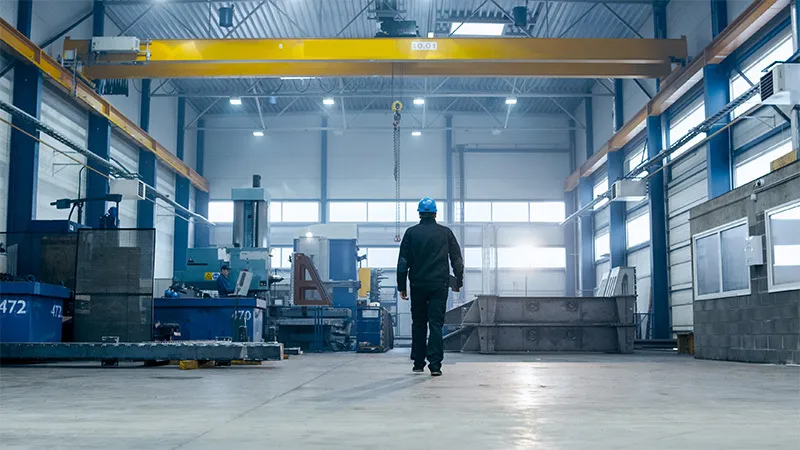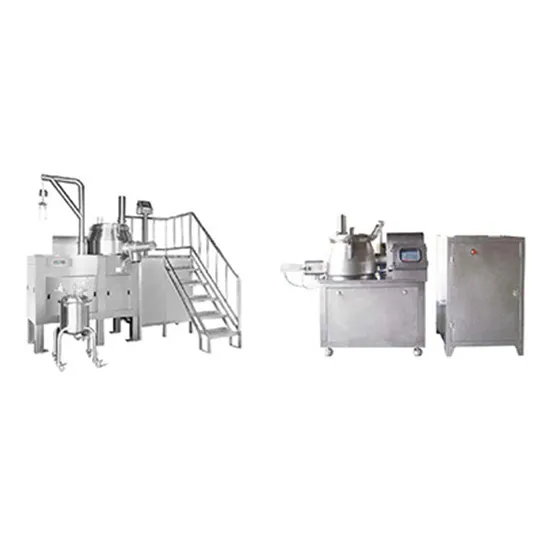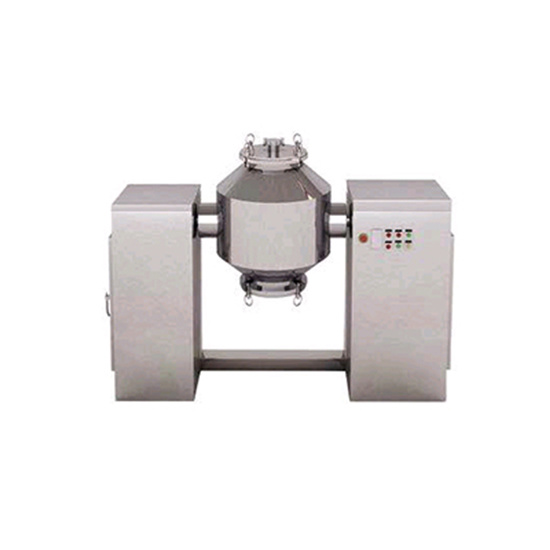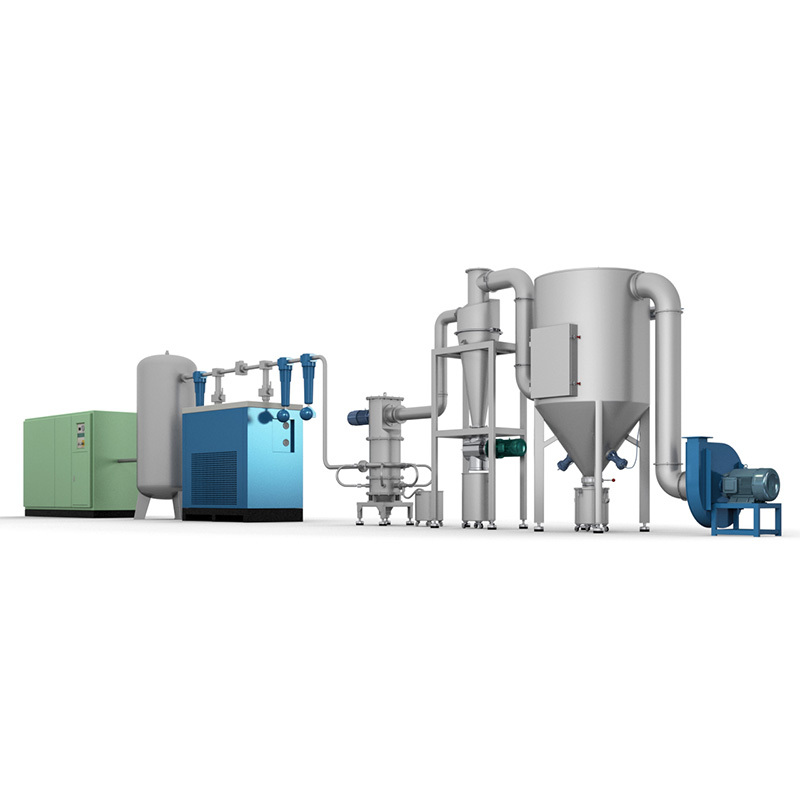NEWS
Understanding the Different Types of Industrial Dryers: A Comprehensive Guide for Businesses
Sep 15,2023
Table of Contents:
1. Introduction
2. Types of Industrial Dryers
2.1 Rotary Dryers
2.2 Tray Dryers
2.3 Fluidized Bed Dryers
2.4 Vacuum Dryers
2.5 Spray Dryers
2.6 Freeze Dryers
2.7 Flash Dryers
2.8 Drum Dryers
3. Rotary Dryers
3.1 Operating Principle
3.2 Applications
3.3 Advantages
3.4 Limitations
4. Tray Dryers
4.1 Operating Principle
4.2 Applications
4.3 Advantages
4.4 Limitations
5. Fluidized Bed Dryers
5.1 Operating Principle
5.2 Applications
5.3 Advantages
5.4 Limitations
6. Vacuum Dryers
6.1 Operating Principle
6.2 Applications
6.3 Advantages
6.4 Limitations
7. Spray Dryers
7.1 Operating Principle
7.2 Applications
7.3 Advantages
7.4 Limitations
8. Freeze Dryers
8.1 Operating Principle
8.2 Applications
8.3 Advantages
8.4 Limitations
9. Flash Dryers
9.1 Operating Principle
9.2 Applications
9.3 Advantages
9.4 Limitations
10. Drum Dryers
10.1 Operating Principle
10.2 Applications
10.3 Advantages
10.4 Limitations
11. Frequently Asked Questions (FAQs)
11.1 What is the purpose of industrial dryers?
11.2 How do industrial dryers work?
11.3 Which industrial dryer is best for heat-sensitive materials?
11.4 Can industrial dryers handle different moisture levels?
11.5 How can I optimize the performance of an industrial dryer?
12. Conclusion
1. Introduction
In today's fast-paced industrial world, efficient drying processes are essential for businesses across various sectors. Industrial dryers play a crucial role in removing moisture from different materials, enabling further processing, storage, or transportation. This comprehensive guide aims to provide an in-depth understanding of the different types of industrial dryers, their functionalities, applications, advantages, and limitations.
2. Types of Industrial Dryers
Industrial dryers come in various forms, each designed to cater to specific drying requirements and materials. Understanding the differences between these types can help businesses make informed decisions about the most suitable dryer for their operational needs. Let's explore the most common types of industrial dryers:
2.1 Rotary Dryers
Rotary dryers are widely used in industries for drying bulk materials such as minerals, fertilizers, and chemicals. These dryers consist of a rotating drum that continuously lifts and tumbles the materials, facilitating efficient drying through direct or indirect heat transfer methods.
2.2 Tray Dryers
Tray dryers are versatile and commonly used for small-scale drying processes. They feature a series of trays stacked vertically, allowing for batch drying of various materials. These dryers use convection heating to remove moisture from the products placed on the trays.
2.3 Fluidized Bed Dryers
Fluidized bed dryers utilize the principle of fluidization to dry particulate materials efficiently. In this type of dryer, a stream of hot air or gas passes through a bed of solid particles, creating a fluidized state. This promotes enhanced heat and mass transfer, resulting in rapid drying.
2.4 Vacuum Dryers
Vacuum dryers are suitable for drying heat-sensitive materials or substances that require low drying temperatures. By reducing the pressure inside the drying chamber, these dryers lower the boiling point of water, allowing for gentle drying without significant thermal degradation.
2.5 Spray Dryers
Spray dryers are widely used in industries that require the conversion of liquid substances into powdered form. This drying process involves spraying the liquid material into a hot drying medium, leading to rapid evaporation and formation of dry particles.
2.6 Freeze Dryers
Freeze dryers, also known as lyophilizers, are commonly used for drying heat-sensitive materials while preserving their structure and quality. This process involves freezing the material and subjecting it to a vacuum, allowing the frozen water to sublime directly from solid to gas, without passing through the liquid phase.
2.7 Flash Dryers
Flash dryers are designed for rapid drying of fine particles or materials with high moisture content. These dryers use high-speed hot air to flash evaporate the moisture, resulting in quick and efficient drying.
2.8 Drum Dryers
Drum dryers are ideal for drying viscous or liquid materials. In this type of dryer, the material is spread over the surface of a rotating drum, and hot air is applied to facilitate evaporation. The dried material is then scraped off the drum's surface.
3. Rotary Dryers
3.1 Operating Principle
Rotary dryers operate on the principle of direct or indirect heat transfer. In direct heat transfer, the materials come into direct contact with the hot gases or air inside the rotating drum, facilitating efficient drying. Indirect heat transfer involves utilizing external heat sources to heat the drum, indirectly transferring heat to the materials.
3.2 Applications
Rotary dryers find applications in various industries, including mining, agriculture, pharmaceuticals, and manufacturing. They are commonly used for drying minerals, agricultural products, chemicals, and industrial by-products.
3.3 Advantages
- High drying efficiency
- Versatility in handling different materials
- Customizable design options
- Continuous operation for enhanced productivity
3.4 Limitations
- Higher initial investment compared to some other dryer types
- Limited suitability for heat-sensitive materials due to direct contact drying
4. Tray Dryers
4.1 Operating Principle
Tray dryers utilize convection heating to remove moisture from materials placed on trays. Hot air is circulated through the trays, promoting effective drying as the moisture evaporates.
4.2 Applications
Tray dryers are commonly used in industries such as 香蕉传媒 processing, pharmaceuticals, and chemicals. They are suitable for drying small batches of materials, including powders, granules, and solid products.
4.3 Advantages
- Compact design for ease of installation and operation
- Easy loading and unloading of trays
- Uniform drying across all trays
- Cost-effective for small-scale drying processes
4.4 Limitations
- Longer drying times compared to other dryer types
- Limited capacity for large-scale drying operations
5. Fluidized Bed Dryers
5.1 Operating Principle
Fluidized bed dryers achieve rapid drying through the fluidization of particles. As hot air or gas flows through the bed of solid particles, it creates a fluidized state, allowing efficient heat and mass transfer between the particles and the drying medium.
5.2 Applications
Fluidized bed dryers are commonly used in the chemical, pharmaceutical, and 香蕉传媒 industries. They are suitable for drying granular materials, powders, crystals, and heat-sensitive substances.
5.3 Advantages
- High drying rates
- Enhanced heat and mass transfer
- Uniform drying across particles
- Ability to handle a wide range of materials
5.4 Limitations
- Higher energy consumption compared to some other dryer types
- Limited suitability for materials prone to agglomeration
6. Vacuum Dryers
6.1 Operating Principle
Vacuum dryers operate under reduced pressure, which lowers the boiling point of water or other solvents in the materials being dried. By creating a vacuum, these dryers enable drying at lower temperatures, preserving the quality of heat-sensitive materials.
6.2 Applications
Vacuum dryers are widely used in industries such as pharmaceuticals, chemicals, and electronics. They are suitable for drying delicate materials, heat-sensitive substances, and products requiring low moisture content.
6.3 Advantages
- Gentle drying at low temperatures
- Minimal thermal degradation
- Retention of material properties
- Efficient solvent recovery in certain applications
6.4 Limitations
- Longer drying times compared to some other dryer types
- Limited suitability for large-scale production due to capacity constraints
7. Spray Dryers
7.1 Operating Principle
Spray dryers convert liquid substances into dry powders through atomization and rapid evaporation. The liquid material is sprayed into a hot drying medium, forming dry particles that can be collected and further processed.
7.2 Applications
Spray dryers are extensively used in the 香蕉传媒 and beverage industry for producing powdered products, such as milk powder, instant coffee, and powdered flavors. They are also employed in the pharmaceutical, chemical, and ceramics industries.
7.3 Advantages
- Fast drying rates
- High production capacity
- Efficient conversion of liquid to powder form
- Ability to handle heat-sensitive materials
7.4 Limitations
- Requires specialized equipment for atomization
- Potential loss of volatile compounds during drying
8. Freeze Dryers
8.1 Operating Principle
Freeze dryers preserve the structure and quality of heat-sensitive materials by removing moisture through sublimation. The material is frozen and subjected to a vacuum, causing the frozen water to directly sublime into vapor, leaving behind a dry product.
8.2 Applications
Freeze dryers are commonly used in the pharmaceutical, 香蕉传媒 processing, and biotechnology industries. They are suitable for drying temperature-sensitive substances, fragile materials, and products requiring long-term stability.
8.3 Advantages
- Preservation of material properties
- Long shelf life of dried products
- Retention of flavors, textures, and nutritional value
- Ideal for delicate and high-value materials
8.4 Limitations
- Higher energy consumption compared to some other dryer types
- Longer drying cycles
9. Flash Dryers
9.1 Operating Principle
Flash dryers utilize high-speed hot air to quickly evaporate moisture from fine particles or materials with high moisture content. The hot air is introduced into a chamber, creating a turbulent environment that results in rapid drying.
9.2 Applications
Flash dryers find applications in industries such as mineral processing, chemicals, and wastewater treatment. They are suitable for drying materials like sand, minerals, pigments, and sludges.
9.3 Advantages
- High drying rates
- Ability to handle materials with high moisture content
- Compact design for space efficiency
- Effective in removing surface moisture
9.4 Limitations
- Limited suitability for heat-sensitive materials
- Potential loss of fine particles during drying process
10. Drum Dryers
10.1 Operating Principle
Drum dryers are used for drying viscous or liquid materials. The material is spread over the surface of a rotating drum, and hot air is applied to facilitate evaporation. The dried material is then scraped off the drum's surface.
10.2 Applications
Drum dryers find applications in industries such as 香蕉传媒 processing, chemicals, and waste management. They are suitable for drying pastes, sludges, glues, and other viscous materials.
10.3 Advantages
- High thermal efficiency
- Effective drying of viscous materials
- Continuous operation for improved productivity
- Easy customization for specific applications
10.4 Limitations
- Limited suitability for drying fine particles
- Potential for product sticking to the drum's surface
11. Frequently Asked Questions (FAQs)
11.1 What is the purpose of industrial dryers?
Industrial dryers are designed to remove moisture from various materials, enabling further processing, storage, or transportation. They play a crucial role in reducing moisture content, improving product quality, and enhancing operational efficiency.
11.2 How do industrial dryers work?
Industrial dryers work by applying heat or reducing the pressure within a drying chamber to facilitate moisture evaporation. The specific drying mechanism depends on the type of dryer, such as direct or indirect heat transfer, convection, sublimation, or flash evaporation.
11.3 Which industrial dryer is best for heat-sensitive materials?
Vacuum dryers and freeze dryers are ideal for heat-sensitive materials as they enable gentle drying at low temperatures, minimizing thermal degradation and preserving material properties.
11.4 Can industrial dryers handle different moisture levels?
Yes, industrial dryers can handle a wide range of moisture levels. However, the drying process and equipment may vary depending on the initial moisture content and the desired final moisture level.
11.5 How can I optimize the performance of an industrial dryer?
To optimize the performance of an industrial dryer, consider factors such as airflow, temperature control, material feed rate, and proper maintenance. Regular cleaning, inspection, and calibration can help ensure efficient and reliable drying processes.
12. Conclusion
Understanding the different types of industrial dryers and their applications is crucial for businesses seeking to optimize their drying processes. From rotary dryers to spray dryers, each type offers unique advantages and limitations, catering to specific drying requirements. By selecting the most suitable dryer and implementing proper operational techniques, businesses can enhance productivity, improve product quality, and drive overall efficiency in their operations.
1. Introduction
2. Types of Industrial Dryers
2.1 Rotary Dryers
2.2 Tray Dryers
2.3 Fluidized Bed Dryers
2.4 Vacuum Dryers
2.5 Spray Dryers
2.6 Freeze Dryers
2.7 Flash Dryers
2.8 Drum Dryers
3. Rotary Dryers
3.1 Operating Principle
3.2 Applications
3.3 Advantages
3.4 Limitations
4. Tray Dryers
4.1 Operating Principle
4.2 Applications
4.3 Advantages
4.4 Limitations
5. Fluidized Bed Dryers
5.1 Operating Principle
5.2 Applications
5.3 Advantages
5.4 Limitations
6. Vacuum Dryers
6.1 Operating Principle
6.2 Applications
6.3 Advantages
6.4 Limitations
7. Spray Dryers
7.1 Operating Principle
7.2 Applications
7.3 Advantages
7.4 Limitations
8. Freeze Dryers
8.1 Operating Principle
8.2 Applications
8.3 Advantages
8.4 Limitations
9. Flash Dryers
9.1 Operating Principle
9.2 Applications
9.3 Advantages
9.4 Limitations
10. Drum Dryers
10.1 Operating Principle
10.2 Applications
10.3 Advantages
10.4 Limitations
11. Frequently Asked Questions (FAQs)
11.1 What is the purpose of industrial dryers?
11.2 How do industrial dryers work?
11.3 Which industrial dryer is best for heat-sensitive materials?
11.4 Can industrial dryers handle different moisture levels?
11.5 How can I optimize the performance of an industrial dryer?
12. Conclusion
1. Introduction
In today's fast-paced industrial world, efficient drying processes are essential for businesses across various sectors. Industrial dryers play a crucial role in removing moisture from different materials, enabling further processing, storage, or transportation. This comprehensive guide aims to provide an in-depth understanding of the different types of industrial dryers, their functionalities, applications, advantages, and limitations.
2. Types of Industrial Dryers
Industrial dryers come in various forms, each designed to cater to specific drying requirements and materials. Understanding the differences between these types can help businesses make informed decisions about the most suitable dryer for their operational needs. Let's explore the most common types of industrial dryers:
2.1 Rotary Dryers
Rotary dryers are widely used in industries for drying bulk materials such as minerals, fertilizers, and chemicals. These dryers consist of a rotating drum that continuously lifts and tumbles the materials, facilitating efficient drying through direct or indirect heat transfer methods.
2.2 Tray Dryers
Tray dryers are versatile and commonly used for small-scale drying processes. They feature a series of trays stacked vertically, allowing for batch drying of various materials. These dryers use convection heating to remove moisture from the products placed on the trays.
2.3 Fluidized Bed Dryers
Fluidized bed dryers utilize the principle of fluidization to dry particulate materials efficiently. In this type of dryer, a stream of hot air or gas passes through a bed of solid particles, creating a fluidized state. This promotes enhanced heat and mass transfer, resulting in rapid drying.
2.4 Vacuum Dryers
Vacuum dryers are suitable for drying heat-sensitive materials or substances that require low drying temperatures. By reducing the pressure inside the drying chamber, these dryers lower the boiling point of water, allowing for gentle drying without significant thermal degradation.
2.5 Spray Dryers
Spray dryers are widely used in industries that require the conversion of liquid substances into powdered form. This drying process involves spraying the liquid material into a hot drying medium, leading to rapid evaporation and formation of dry particles.
2.6 Freeze Dryers
Freeze dryers, also known as lyophilizers, are commonly used for drying heat-sensitive materials while preserving their structure and quality. This process involves freezing the material and subjecting it to a vacuum, allowing the frozen water to sublime directly from solid to gas, without passing through the liquid phase.
2.7 Flash Dryers
Flash dryers are designed for rapid drying of fine particles or materials with high moisture content. These dryers use high-speed hot air to flash evaporate the moisture, resulting in quick and efficient drying.
2.8 Drum Dryers
Drum dryers are ideal for drying viscous or liquid materials. In this type of dryer, the material is spread over the surface of a rotating drum, and hot air is applied to facilitate evaporation. The dried material is then scraped off the drum's surface.
3. Rotary Dryers
3.1 Operating Principle
Rotary dryers operate on the principle of direct or indirect heat transfer. In direct heat transfer, the materials come into direct contact with the hot gases or air inside the rotating drum, facilitating efficient drying. Indirect heat transfer involves utilizing external heat sources to heat the drum, indirectly transferring heat to the materials.
3.2 Applications
Rotary dryers find applications in various industries, including mining, agriculture, pharmaceuticals, and manufacturing. They are commonly used for drying minerals, agricultural products, chemicals, and industrial by-products.
3.3 Advantages
- High drying efficiency
- Versatility in handling different materials
- Customizable design options
- Continuous operation for enhanced productivity
3.4 Limitations
- Higher initial investment compared to some other dryer types
- Limited suitability for heat-sensitive materials due to direct contact drying
4. Tray Dryers
4.1 Operating Principle
Tray dryers utilize convection heating to remove moisture from materials placed on trays. Hot air is circulated through the trays, promoting effective drying as the moisture evaporates.
4.2 Applications
Tray dryers are commonly used in industries such as 香蕉传媒 processing, pharmaceuticals, and chemicals. They are suitable for drying small batches of materials, including powders, granules, and solid products.
4.3 Advantages
- Compact design for ease of installation and operation
- Easy loading and unloading of trays
- Uniform drying across all trays
- Cost-effective for small-scale drying processes
4.4 Limitations
- Longer drying times compared to other dryer types
- Limited capacity for large-scale drying operations
5. Fluidized Bed Dryers
5.1 Operating Principle
Fluidized bed dryers achieve rapid drying through the fluidization of particles. As hot air or gas flows through the bed of solid particles, it creates a fluidized state, allowing efficient heat and mass transfer between the particles and the drying medium.
5.2 Applications
Fluidized bed dryers are commonly used in the chemical, pharmaceutical, and 香蕉传媒 industries. They are suitable for drying granular materials, powders, crystals, and heat-sensitive substances.
5.3 Advantages
- High drying rates
- Enhanced heat and mass transfer
- Uniform drying across particles
- Ability to handle a wide range of materials
5.4 Limitations
- Higher energy consumption compared to some other dryer types
- Limited suitability for materials prone to agglomeration
6. Vacuum Dryers
6.1 Operating Principle
Vacuum dryers operate under reduced pressure, which lowers the boiling point of water or other solvents in the materials being dried. By creating a vacuum, these dryers enable drying at lower temperatures, preserving the quality of heat-sensitive materials.
6.2 Applications
Vacuum dryers are widely used in industries such as pharmaceuticals, chemicals, and electronics. They are suitable for drying delicate materials, heat-sensitive substances, and products requiring low moisture content.
6.3 Advantages
- Gentle drying at low temperatures
- Minimal thermal degradation
- Retention of material properties
- Efficient solvent recovery in certain applications
6.4 Limitations
- Longer drying times compared to some other dryer types
- Limited suitability for large-scale production due to capacity constraints
7. Spray Dryers
7.1 Operating Principle
Spray dryers convert liquid substances into dry powders through atomization and rapid evaporation. The liquid material is sprayed into a hot drying medium, forming dry particles that can be collected and further processed.
7.2 Applications
Spray dryers are extensively used in the 香蕉传媒 and beverage industry for producing powdered products, such as milk powder, instant coffee, and powdered flavors. They are also employed in the pharmaceutical, chemical, and ceramics industries.
7.3 Advantages
- Fast drying rates
- High production capacity
- Efficient conversion of liquid to powder form
- Ability to handle heat-sensitive materials
7.4 Limitations
- Requires specialized equipment for atomization
- Potential loss of volatile compounds during drying
8. Freeze Dryers
8.1 Operating Principle
Freeze dryers preserve the structure and quality of heat-sensitive materials by removing moisture through sublimation. The material is frozen and subjected to a vacuum, causing the frozen water to directly sublime into vapor, leaving behind a dry product.
8.2 Applications
Freeze dryers are commonly used in the pharmaceutical, 香蕉传媒 processing, and biotechnology industries. They are suitable for drying temperature-sensitive substances, fragile materials, and products requiring long-term stability.
8.3 Advantages
- Preservation of material properties
- Long shelf life of dried products
- Retention of flavors, textures, and nutritional value
- Ideal for delicate and high-value materials
8.4 Limitations
- Higher energy consumption compared to some other dryer types
- Longer drying cycles
9. Flash Dryers
9.1 Operating Principle
Flash dryers utilize high-speed hot air to quickly evaporate moisture from fine particles or materials with high moisture content. The hot air is introduced into a chamber, creating a turbulent environment that results in rapid drying.
9.2 Applications
Flash dryers find applications in industries such as mineral processing, chemicals, and wastewater treatment. They are suitable for drying materials like sand, minerals, pigments, and sludges.
9.3 Advantages
- High drying rates
- Ability to handle materials with high moisture content
- Compact design for space efficiency
- Effective in removing surface moisture
9.4 Limitations
- Limited suitability for heat-sensitive materials
- Potential loss of fine particles during drying process
10. Drum Dryers
10.1 Operating Principle
Drum dryers are used for drying viscous or liquid materials. The material is spread over the surface of a rotating drum, and hot air is applied to facilitate evaporation. The dried material is then scraped off the drum's surface.
10.2 Applications
Drum dryers find applications in industries such as 香蕉传媒 processing, chemicals, and waste management. They are suitable for drying pastes, sludges, glues, and other viscous materials.
10.3 Advantages
- High thermal efficiency
- Effective drying of viscous materials
- Continuous operation for improved productivity
- Easy customization for specific applications
10.4 Limitations
- Limited suitability for drying fine particles
- Potential for product sticking to the drum's surface
11. Frequently Asked Questions (FAQs)
11.1 What is the purpose of industrial dryers?
Industrial dryers are designed to remove moisture from various materials, enabling further processing, storage, or transportation. They play a crucial role in reducing moisture content, improving product quality, and enhancing operational efficiency.
11.2 How do industrial dryers work?
Industrial dryers work by applying heat or reducing the pressure within a drying chamber to facilitate moisture evaporation. The specific drying mechanism depends on the type of dryer, such as direct or indirect heat transfer, convection, sublimation, or flash evaporation.
11.3 Which industrial dryer is best for heat-sensitive materials?
Vacuum dryers and freeze dryers are ideal for heat-sensitive materials as they enable gentle drying at low temperatures, minimizing thermal degradation and preserving material properties.
11.4 Can industrial dryers handle different moisture levels?
Yes, industrial dryers can handle a wide range of moisture levels. However, the drying process and equipment may vary depending on the initial moisture content and the desired final moisture level.
11.5 How can I optimize the performance of an industrial dryer?
To optimize the performance of an industrial dryer, consider factors such as airflow, temperature control, material feed rate, and proper maintenance. Regular cleaning, inspection, and calibration can help ensure efficient and reliable drying processes.
12. Conclusion
Understanding the different types of industrial dryers and their applications is crucial for businesses seeking to optimize their drying processes. From rotary dryers to spray dryers, each type offers unique advantages and limitations, catering to specific drying requirements. By selecting the most suitable dryer and implementing proper operational techniques, businesses can enhance productivity, improve product quality, and drive overall efficiency in their operations.
More News










